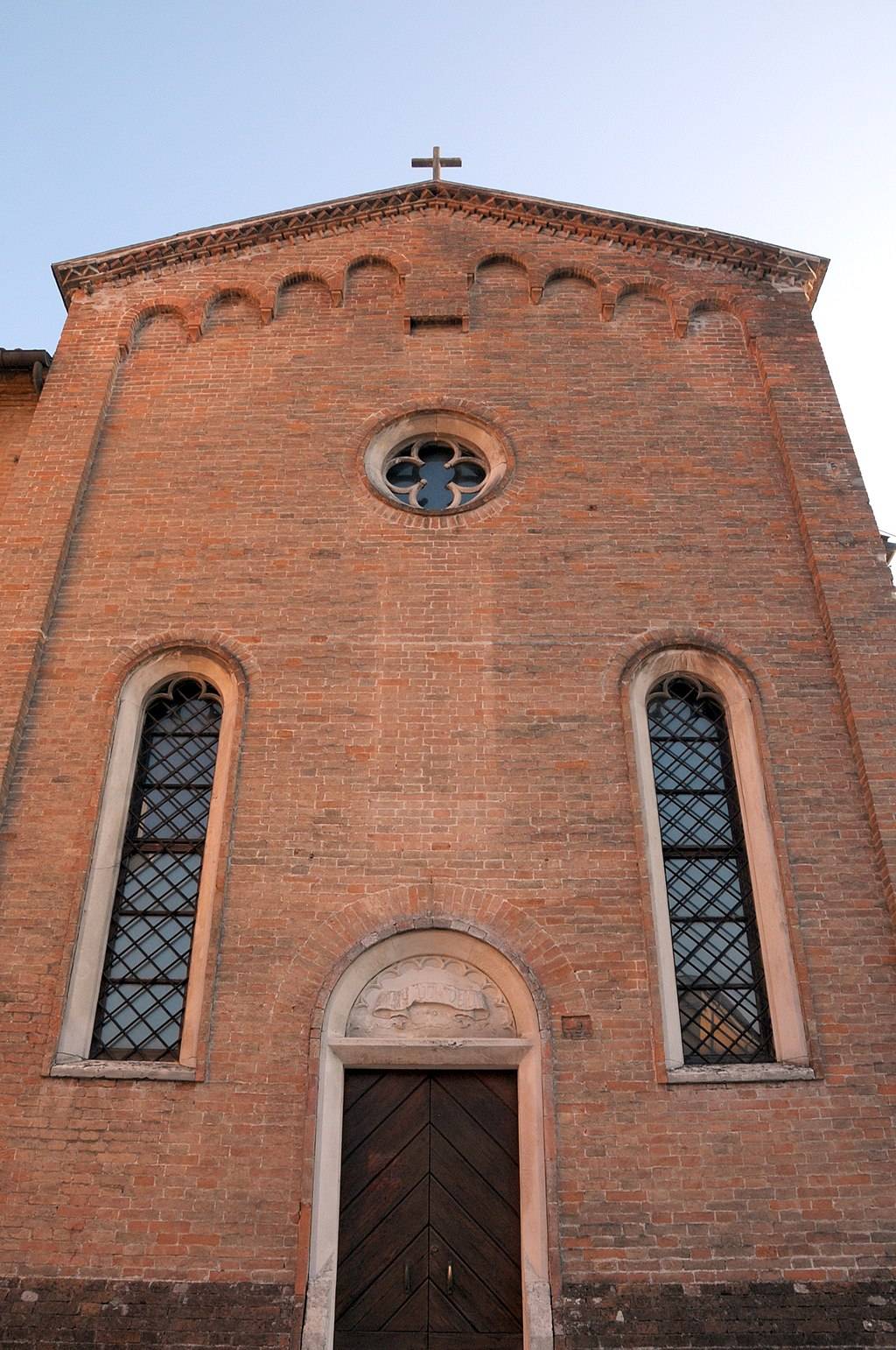Oratory of Saint Michael
A historical church decorated by Jacopo da Verona with frescoes inspired by the Gospels, episodes from daily life, and portraits of leading figures of fourteenth-century Padua

Standing in a small square of the same name, near the Carrara Castle, the Oratory of Saint Michael is a historic Paduan building that had undergone alterations over the centuries, radically changing the architectural appearance of a church. Dedicated to Saint Michael and the Holy Archangels, the church origins date back to sometime between the 6th and the second half of the 7th century.
By the late 14th century, the church had come within the da Carrara sphere of influence. During the Visconti forces’ siege of the city in 1390, a fire badly damaged the church. After the incident, the de Bovi family decided to finance the work to rebuild it, and in 1397 the church was extended decorated with frescoes at the interior. A stone plaque placed on the internal wall in front of the entrance to the chapel confirms that the frescoes were the work of Jacopo da Verona, the same artist that worked with Altichiero da Zevio on the frescoes at the Oratory of Saint George. However, the Saint Michael frescoes are the only works that can with certainty be attributed to him alone, which is also the last example of fresco painting in fourteenth-century Padua.
During the years of the Serenissima, the ownership of the church passed to the Venetian Republic thence to various other Venetian families. In 1808 the structure built by the de Bovi was downgraded to an Oratory, and this caused its decline until it was closed to the public four years later. In 1815, Francesco Pisani, who owned the palazzo alongside the church, decided to demolish the oratory. All that survived was part of the nave and the chapel with the frescoes by Jacopo da Verona. The frescoes of the northern and western parts were detached and framed and were restored and repositioned in the Oratory only at the end of the 20th century. A fresco attributed to Tuscan artist Cennino Cennini, a painter at the court of the last Carraresi Lord of Padua (Francesco II), detached from its original wall, is now part of the collection of the Civic Museums of Padova.
Description of the frescoes cycle
In the 14th century, pictorial art was incredibly influenced by Giotto. Jacopo da Verona developed his original style, a pleasant and fluent narration of scenes of sacred origin with a lively and affable interpretation of daily life. He devoted particular attention to the rendering of portrait likenesses and naturalistic details. Even at the technical level, there is a development upon the lessons learned from Giotto, with Jacopo da Verona further exploring the interaction between different colours – particularly in the modelling of volume and the creation of effects of iridescence. Another peculiarity of his style is the depiction of interiors and various objects that make it possible to set a biblical event in everyday life. The overall atmosphere becomes more bourgeois and domestic, which replaces the aristocratic elegance that had characterised the decorations of the Basilica’s chapels, the Baptistery, and the Carrara Palace.
The frescoes within the Oratory of Saint Michael recount five episodes from the Life of the Virgin, which unfold around the space in an anticlockwise direction. Jacopo da Verona was such a skilled portraitist that it has been possible to identify various real-life characters in the cortege of figures within The Adoration of the Magi. The procession opens with Francesco Novello da Carrara, behind whom comes Francesco I da Carrara. It has also been argued that the figures seen in the profile at The Burial of the Virgin may be members of the de Bovi family.
We welcome all contributions, no matter how small. Even a spelling correction is greatly appreciated.
All submissions are reviewed before being published.
Continue to changelogWe welcome all contributions.
All submissions are reviewed before being published.
We welcome all contributions, no matter how small. Even a spelling correction is greatly appreciated.
All submissions are reviewed before being published.
Continue to changelogWe welcome all contributions, no matter how small. Even a spelling correction is greatly appreciated.
All submissions are reviewed before being published.
Continue to changelogWe welcome all contributions, no matter how small. Even a spelling correction is greatly appreciated.
All submissions are reviewed before being published.
Continue to changelogCategory
Cost
-
La Specola has been the astronomical observatory of Padua since 1765, built in the tower of Castelvecchio, the ancient castle of the city and the pride of medieval Padua.
-
567 m
Prato della Valle in Padua is one of the most spectacular squares in the world and, with its 90,000 square meters, is one of the largest in Europe.
-
601 m
Piazza Duomo, one of the squares in the heart of Padua, is characterized by the silhouettes of the Cathedral standing between the Episcopal palace and the Baptistery
-
643 m
The masterwork by Giusto de' Menabuoi, the frescoes are inspired by scenes from the Old and New Testaments, which culminates in the splendid image of Christ in Paradise
-
The Chapel with its frescoes painted by Guariento is a fantastic testimony of the splendor of what used to be the Carrara Palace